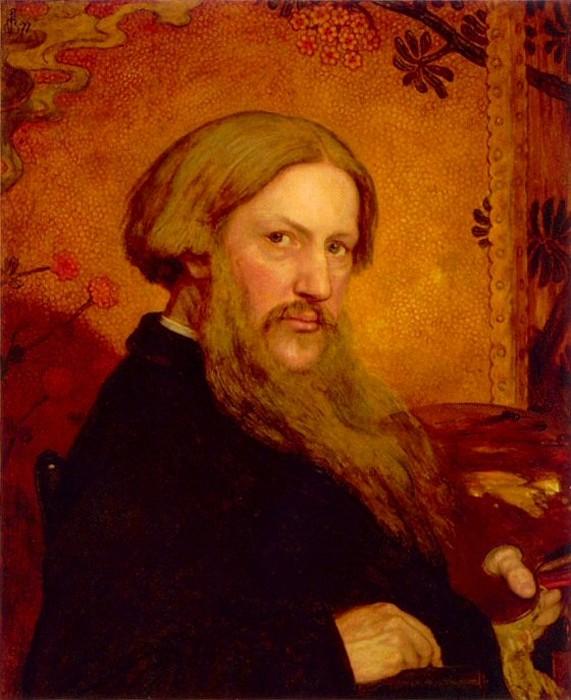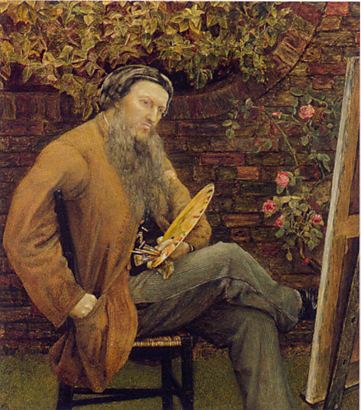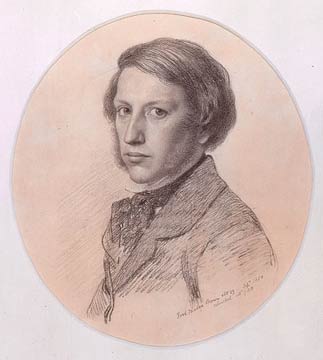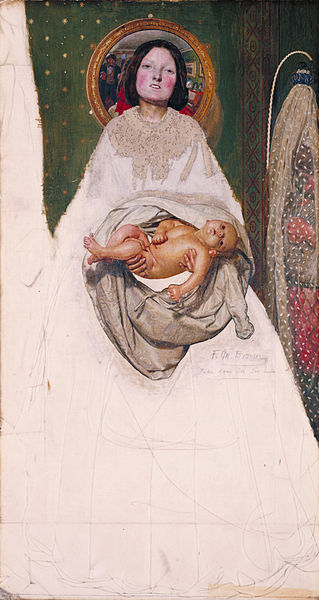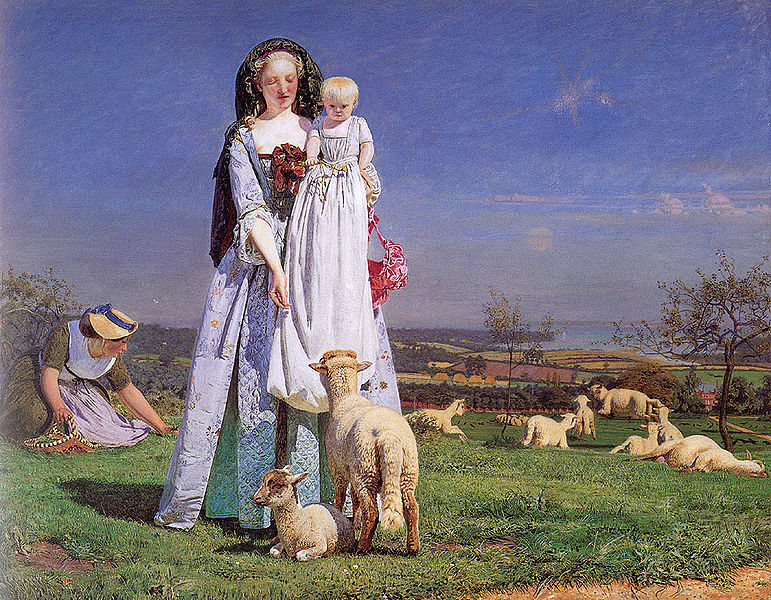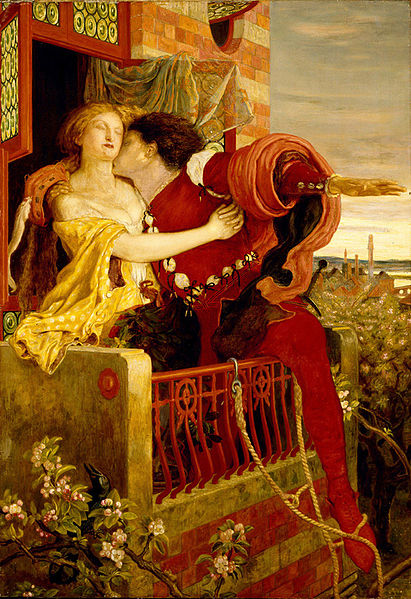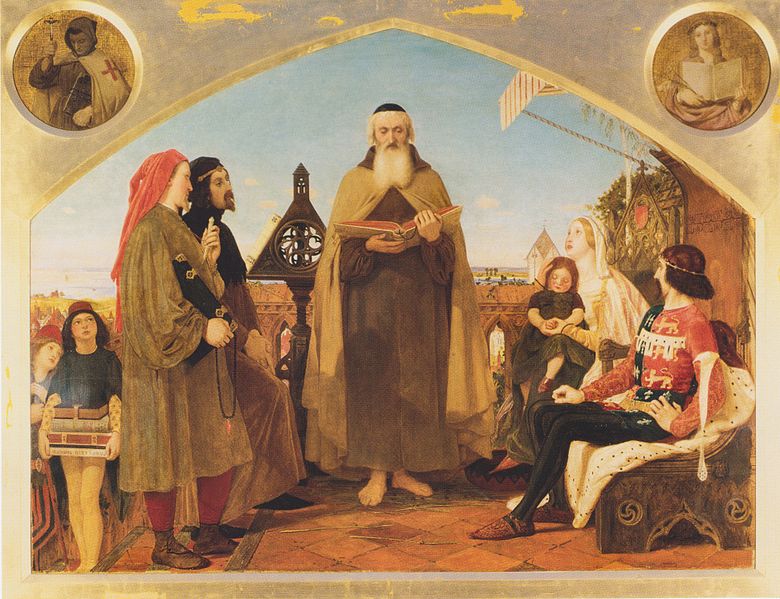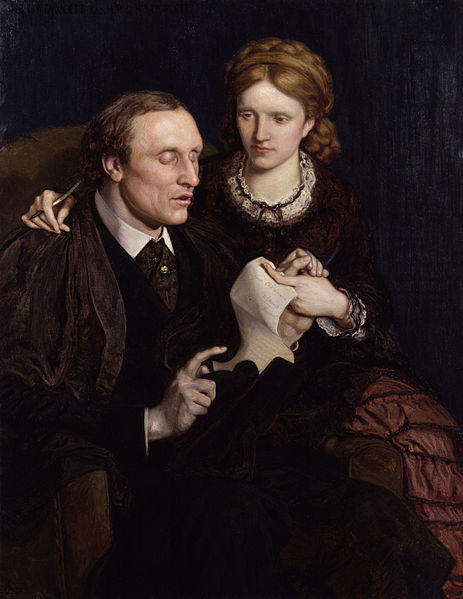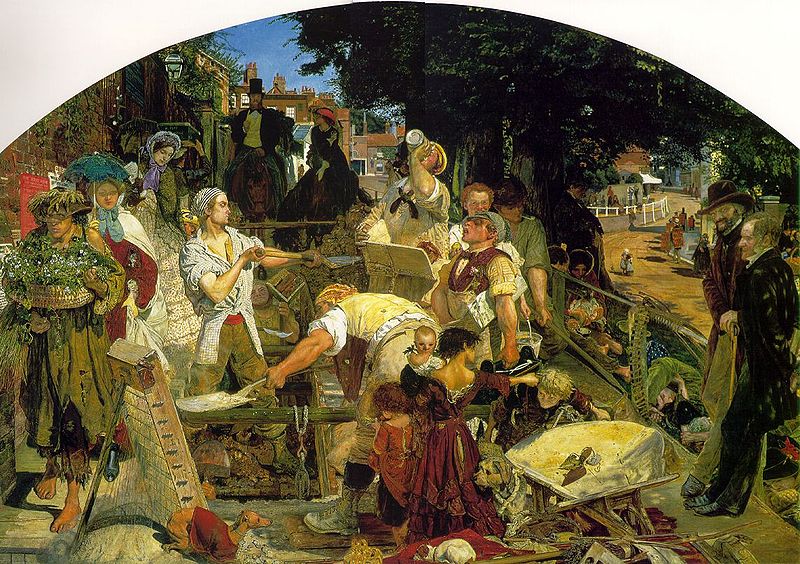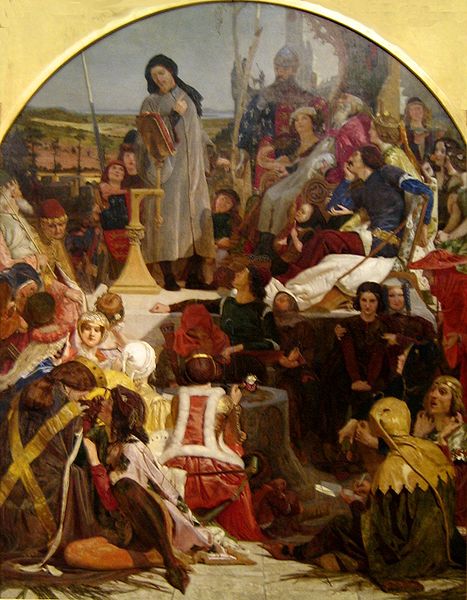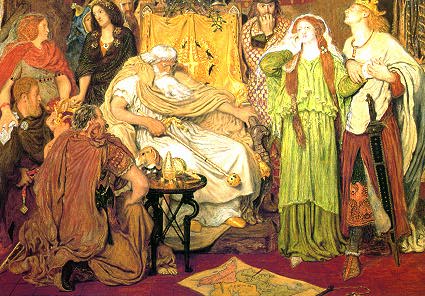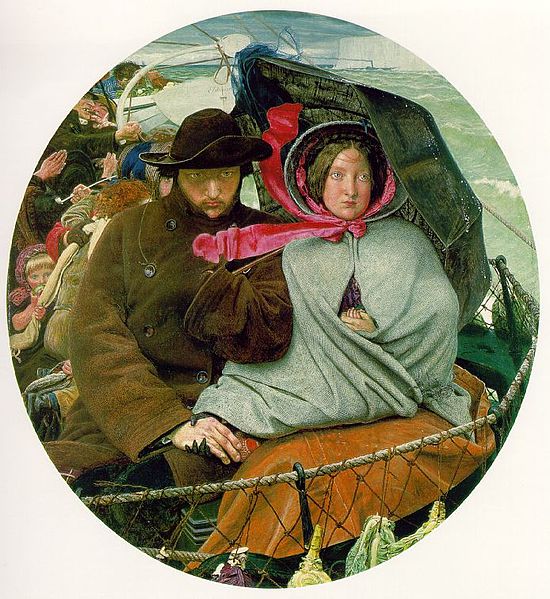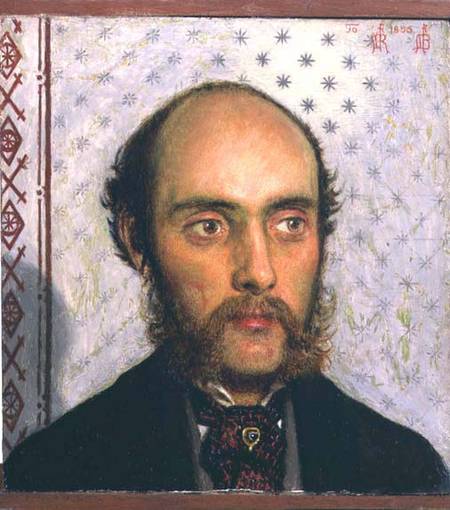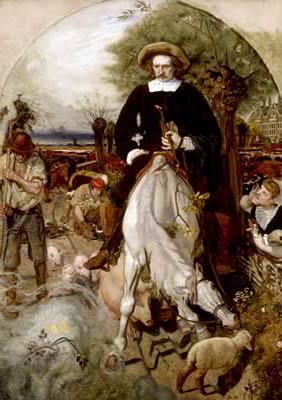<Back to Index>
- Painter Ford Madox Brown, 1821
PAGE SPONSOR
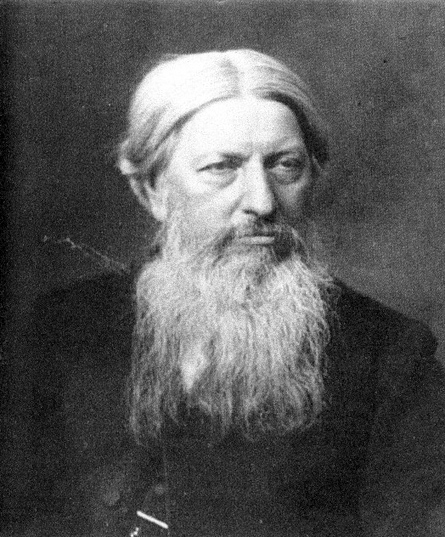
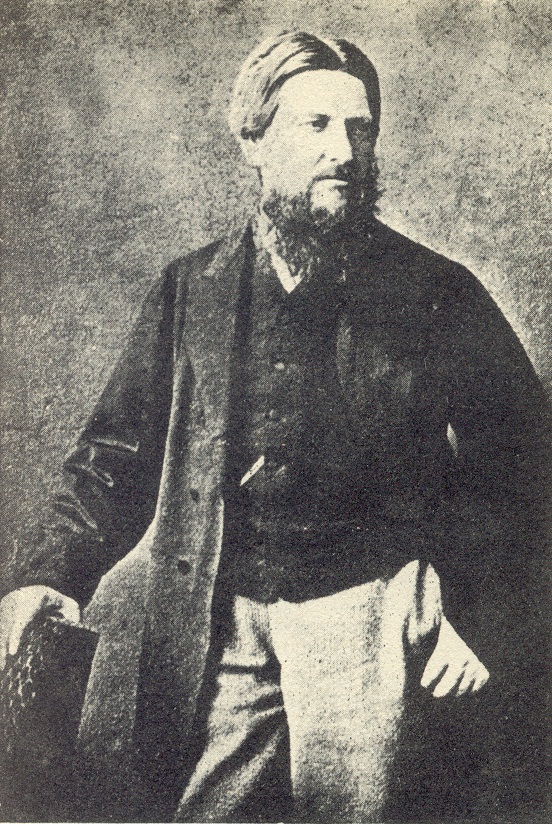
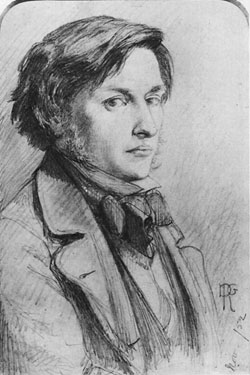
Ford Madox Brown (16 April 1821 – 6 October 1893) was an English painter of moral and historical subjects, notable for his distinctively graphic and often Hogarthian version of the Pre - Raphaelite style. Arguably, his most notable painting was Work. Brown spent the latter years of his life painting The Manchester Murals for Manchester Town Hall which depicted Mancunian history.
Brown was born in Calais and studied art in Antwerp under Egide Charles Gustave Wappers. In 1843 he submitted work to the Westminster Cartoon Competition, for compositions to decorate the new Palace of Westminster. He was not successful. His early works were, however, greatly admired by the young Dante Gabriel Rossetti, who asked him to become his tutor. Through Rossetti, Brown came into contact with the artists who went on to form the Pre - Raphaelite Brotherhood (PRB). Though closely linked to them, he was never actually a member of the brotherhood itself. Nevertheless, he remained close to Rossetti, with whom he also joined William Morris's design company, Morris, Marshall, Faulkner & Co., in 1861. He was a close friend of the landscape artist Henry Mark Anthony. Brown was also the main organizer of the Hogarth Club, a short lived replacement for the PRB which existed between 1858 and 1861.
One of his most famous images is The Last of England which was sold in March 1859 for 325 Guineas (2010: £25,800). It depicts a pair of stricken emigrants as they sail away on the ship that will take them from England forever. It was inspired by the departure of the Pre - Raphaelite sculptor Thomas Woolner, who had left for Australia. The painting is structured with Brown's characteristic linear energy, and emphasis on apparently grotesque and banal details, such as the cabbages hanging from the ship's side.
Brown's most important painting was Work (1852 – 1865), commissioned by Thomas Plint and which he showed at a special exhibition. It attempted to depict the totality of the mid - Victorian social experience in a single image, depicting 'navvies' digging up a road, Heath Street in Hampstead, London, and disrupting the old social hierarchies as they did so. The image erupts into proliferating details from the dynamic centre of the action, as the workers tear a hole in the road – and, symbolically, in the social fabric. Each character represents a particular social class and role in the modern urban environment. Brown wrote a catalogue to accompany the special exhibition of Work. This publication included an extensive explanation of Work that nevertheless leaves many questions unanswered.
Brown's major achievement after Work was the "Manchester Murals", a cycle of twelve paintings in the Great Hall of Manchester Town Hall depicting
the history of the city. Brown would be 72 by the time he finished the
murals. In total, he took six year perfecting the murals which were his
last major work.
Brown was married twice. His first wife Elizabeth Bromley died in 1846 aged 27, after giving birth to a daughter, Lucy. He later married his model Emma Hill, who appears in many of his paintings and is the wife in The Last of England. His son with Emma, Oliver Madox Brown (1855 – 1874) showed promise both as an artist and poet, but died of blood poisoning. Their daughter, Catherine, married Francis Hueffer; through Catherine, Brown was the grandfather of novelist Ford Madox Ford and great - grandfather of Labour Home Secretary Frank Soskice.
Brown is buried in London in the St Pancras and Islington Cemetery, close to Muswell Hill. He was given a secular funeral, and the funeral oration was delivered by the American Moncure D. Conway, the secularist after whom Conway Hall was later named.
The Wetherspoon pub in Oxford Road, Manchester is named after Ford Madox Brown. It states on the Wetherspoons website that "This
J D Wetherspoon pub is named after the much - travelled artist Ford Madox
Brown, a one - time resident of Victoria Park, a suburb south of the
pub." The pub opened in 2007.
